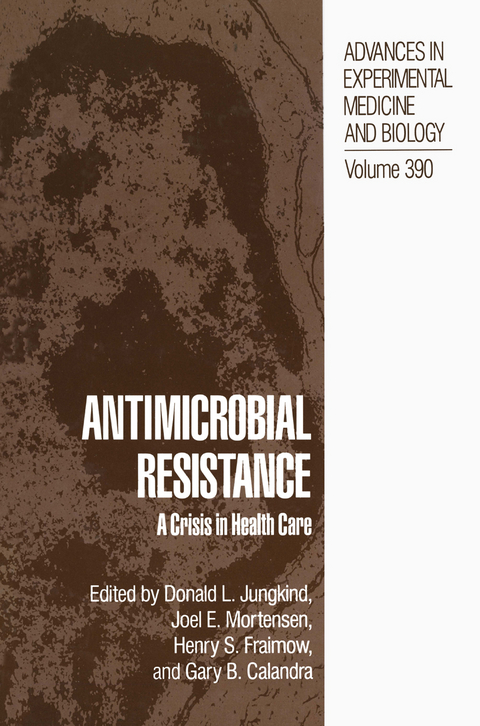
Antimicrobial Resistance
Kluwer Academic/Plenum Publishers (Verlag)
978-0-306-45207-9 (ISBN)
Antimicrobial Resistance: A Global Perspective.- Resistance to Antibacterial Agents.- Bacterial Resistance to Carbapenems.- Bacterial Resistance to Fluoroquinolones: Mechanisms and Patterns.- A Comparison of Active Site Binding of 4-Quinolones and Novel Flavone Gyrase Inhibitors to DNA Gyrase.- A Low-Copy Number Plasmid Mediating ?-Lactamase Production by Xanthomonas maltophilia.- Glycopeptide Resistance in Gram-Positive Pathogens.- Vancomycin-Dependent Enterococci: A Clinical and Laboratory Assessment.- Streptococcus pyogenes: Resistant, Tolerant, Neither or Both?.- The Antimicrobial Susceptibility of Streptococcus pyogenes Isolates from the Philadelphia Area.- Antibiotic-Resistance in Streptococcus pneumoniae.- Emerging Trends in Antimicrobial Resistance: A Laboratory Perspective.- Molecular Epidemiologic Analysis of Antibiotic Resistant Microorganisms.- Patterns of Resistance in Organisms Causing Gynecologic Infections.- Practical Management of Patients Infected with Resistant Organisms: An Infection Control Perspective.- Resistance to Anti-Human Immunodeficiency Virus Therapeutic Agents.- Molecular Approaches to the Spreading Problem of Drug Resistant Malaria.- An Improved Method for in Vitro Susceptibility Testing of Trichomonas vaginalis.- Antifungal Drugs and Resistance.- Contributors.
| Erscheint lt. Verlag | 29.2.1996 |
|---|---|
| Reihe/Serie | Advances in Experimental Medicine and Biology ; 390 |
| Zusatzinfo | XI, 248 p. |
| Verlagsort | New York |
| Sprache | englisch |
| Maße | 156 x 234 mm |
| Themenwelt | Medizin / Pharmazie ► Medizinische Fachgebiete ► Pharmakologie / Pharmakotherapie |
| Studium ► Querschnittsbereiche ► Infektiologie / Immunologie | |
| ISBN-10 | 0-306-45207-3 / 0306452073 |
| ISBN-13 | 978-0-306-45207-9 / 9780306452079 |
| Zustand | Neuware |
| Haben Sie eine Frage zum Produkt? |
aus dem Bereich


